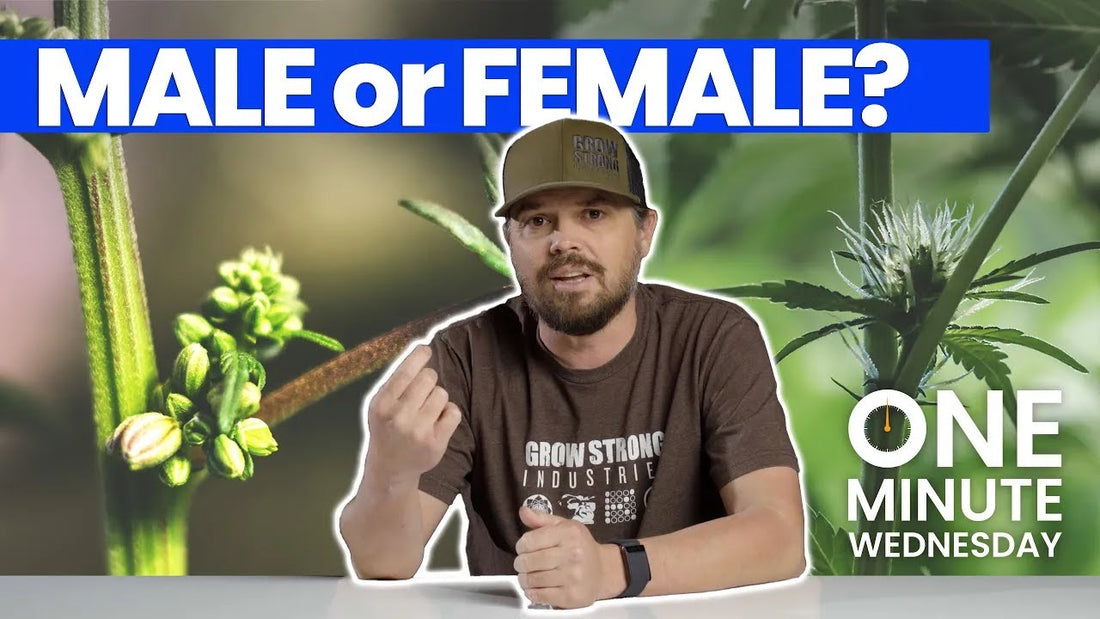
Early Signs of a Female Plant
Early Signs of a Female Plant: How to Identify Female Cannabis Plants
When growing cannabis, one of the most important things to determine early on is whether your plants are male or female. Female cannabis plants are the ones that produce the coveted buds that are rich in cannabinoids like THC and CBD. Identifying the early signs of a female plant can help ensure you’re growing the right plants for your harvest, while also preventing male plants from fertilizing females, which can reduce the quality of your yield. In this guide, we’ll explore how to spot the early signs of a female cannabis plant and why it’s crucial to identify them early in the growing process.
Why Is Identifying Female Cannabis Plants Important?
In cannabis cultivation, only female plants produce the resinous buds that growers are looking for. Male plants produce pollen sacs and can fertilize female plants, leading to the production of seeds instead of high-quality, seedless buds (also known as sinsemilla). When a female plant is fertilized, it diverts energy away from producing potent buds to focus on seed production, which reduces the overall quality and yield of the crop.
By identifying female plants early, growers can separate them from male plants, ensuring a high-quality, seed-free harvest. Let’s dive into the early signs of a female plant so you can spot them with confidence.
When Do Cannabis Plants Show Their Sex?
Cannabis plants typically start showing their sex between 4 to 6 weeks into the vegetative stage, though this can vary depending on the strain and growing conditions. The transition from the vegetative stage to the flowering stage is when plants start to display pre-flowers, which are the first indicators of whether a plant is male or female.
Pre-flowers are small growths that develop at the nodes (where the branches meet the stem). These pre-flowers hold the key to determining the plant’s sex. To identify whether your plant is female, you’ll need to closely examine the nodes for specific characteristics.
Early Signs of a Female Cannabis Plant
Here are the early signs to look for when identifying a female cannabis plant:
1. Pre-Flowers at the Nodes
The first place to look for signs of a female plant is at the nodes, where the branches and leaves meet the main stem. Female cannabis plants will develop small, teardrop-shaped pre-flowers known as pistils. These pre-flowers typically emerge about 4 to 6 weeks into the plant’s life cycle.
The most distinguishing feature of female pre-flowers is the presence of tiny, white, hair-like structures called stigmas. These stigmas eventually grow into the long, white hairs that are a key indicator of a mature female cannabis plant. At this early stage, the pistils and stigmas may be very small, so you’ll need to examine the plant closely with the naked eye or a magnifying glass.
2. Presence of White Stigmas
The appearance of thin, white hairs (stigmas) at the nodes is the most definitive early sign of a female cannabis plant. These stigmas are part of the plant’s reproductive system and will eventually collect pollen from male plants if left to fertilize. In the absence of male plants, these stigmas will continue to grow, and the plant will focus on producing buds.
If you see white hairs emerging from the pre-flowers, you can be confident that you have a female plant. Male plants, on the other hand, will develop small, round pollen sacs instead of stigmas.
3. No Sign of Pollen Sacs
Another early indicator that your plant is female is the absence of pollen sacs. Male plants develop pollen sacs, which are small, round growths that appear at the nodes and resemble tiny balls or clusters. These sacs are designed to release pollen to fertilize female plants.
If you see round sacs forming at the nodes instead of teardrop-shaped pre-flowers with white hairs, it’s a sign that the plant is male. At this point, it’s important to remove the male plants from the growing area to prevent them from pollinating the females.
4. Slower Pre-Flower Development
Female cannabis plants tend to develop pre-flowers more slowly than male plants. While male plants may start showing their pollen sacs relatively quickly, female plants often take a little longer to display their pistils and stigmas. This means that if you notice your plant is slow to show its sex, there’s a good chance it’s female.
Patience is key when identifying female plants. Don’t rush to remove plants from your grow space until you’re certain of their sex, especially since female plants may take longer to reveal their pre-flowers.
What to Do After Identifying a Female Plant
Once you’ve identified your female plants, it’s important to take the right steps to ensure they thrive and produce high-quality buds. Here’s what to do next:
1. Separate Male and Female Plants
After identifying the female plants, remove any male plants from your grow space to prevent them from fertilizing the females. Fertilized female plants will produce seeds, reducing the quality and potency of the buds. If you’re growing both male and female plants for breeding purposes, keep them in separate areas to avoid accidental pollination.
2. Continue Providing Proper Care
Female plants require consistent care to produce high-quality buds. Ensure they are getting the right amount of light, water, and nutrients during the vegetative and flowering stages. Be mindful of their environmental conditions, such as temperature and humidity, as this can affect their growth and bud production.
3. Monitor for Hermaphrodites
In some cases, stress from environmental factors like extreme temperatures or inconsistent lighting can cause female plants to develop both male and female reproductive organs. These hermaphroditic plants (or "hermies") can self-pollinate and produce seeds. If you notice pollen sacs forming on a female plant, it’s important to remove those sacs to prevent pollination.
Common Mistakes When Identifying Female Plants
While identifying female plants is relatively straightforward once you know what to look for, there are some common mistakes growers make:
- Identifying Too Early: Trying to determine the sex of your plants too early in the vegetative stage can lead to incorrect assumptions. Wait until pre-flowers have fully developed before deciding whether a plant is male or female.
- Confusing Pollen Sacs for Pistils: Male pollen sacs can sometimes be mistaken for female pre-flowers, especially by new growers. Always look for the presence of white hairs (stigmas) to confirm that the plant is female.
- Not Using a Magnifying Glass: Pre-flowers can be very small and difficult to see with the naked eye, especially in the early stages. Using a magnifying glass can help you get a closer look at the nodes and accurately identify the plant’s sex.
Conclusion
Identifying the early signs of a female cannabis plant is crucial for ensuring a successful and high-quality harvest. By carefully examining the nodes for pre-flowers and white stigmas, you can confidently determine the sex of your plants and take the necessary steps to maximize their potential. Remember, patience is key—female plants may take a little longer to show their sex, but with careful monitoring, you’ll soon be able to enjoy a bountiful, bud-filled harvest.
